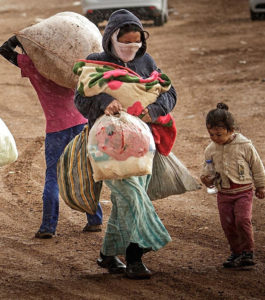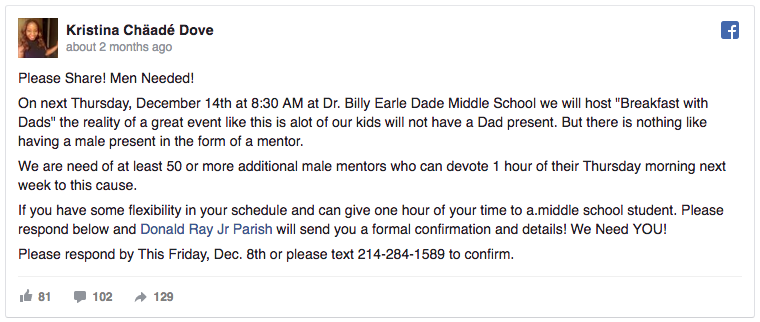There is an activist that I loathe, a spokesperson for causes that go against everything I believe in. When I would hear or see him speak, my blood would boil. I’m not going to say his name because I do not want to give what he stands for any spotlight whatsoever.
Before he passed away, he was everywhere in the media here in the USA: in newspaper articles, in TV programs, on the radio. Some days, I saw him multiple times across networks. And I would seethe and wonder: why do reporters and producers call this man all the time to comment on, well, anything at all? Why do they give him so much attention?
At some point, I heard a press person be asked this very question. And he said something along these lines, “Because he will always, always return our calls, within minutes of our calling. He places a priority on talking to us. Whether it’s national network or a tiny newspaper in a small town, he always talks almost immediately to any press person that asks for an interview or comment.”
It immediately made me think of all the times I told the Executive Director of wherever I was working that some reporter was on the phone, or had emailed, and wanted an interview or comment, and the agency head telling me “I don’t have time” or “I don’t want to” or “Yeah, just give me the info, I’ll call” but she or he never did. I thought of how often I have had to BEG a senior staff member to do a requested interview, how I’ve offered to sit in on the interview and answer any questions the director may not know. And I thought about how, later, after not doing these interview requests, these same people will complain about lack of coverage from the press.
 I worked at the Williamstown Theatre Festival for two summers, the second time as the head of publicity, both times pre-Internet, and I got a lot of compliments about how much press coverage I was able to land for the shows. Someone asked me for my “secret”. And it was easy to answer: I treated the press as my customers. I would knock myself to get them absolutely anything they needed, no matter how tight the deadline. I also made sure, before the interview with the famous person, that the reporter had everything about the upcoming show that person would be in, with the key information – what, when, where and how to buy tickets – right up front. Whether it was Entertainment Tonight, the entertainment reporters from CNN, or a tiny community newspaper in Vermont, everyone got immediate callbacks, everyone got complete info, everyone got some kind of access, even if it wasn’t precisely, exactly the access they wanted. And I have to give kudos to the two Executive Directors I worked under, first Nikos Psacharopoulos and then Peter Hunt, both of whom would do absolutely any interview with the press they were asked to do, no matter how crazed they were with final rehearsals, no matter the absolutely horrid mood they were in.
I worked at the Williamstown Theatre Festival for two summers, the second time as the head of publicity, both times pre-Internet, and I got a lot of compliments about how much press coverage I was able to land for the shows. Someone asked me for my “secret”. And it was easy to answer: I treated the press as my customers. I would knock myself to get them absolutely anything they needed, no matter how tight the deadline. I also made sure, before the interview with the famous person, that the reporter had everything about the upcoming show that person would be in, with the key information – what, when, where and how to buy tickets – right up front. Whether it was Entertainment Tonight, the entertainment reporters from CNN, or a tiny community newspaper in Vermont, everyone got immediate callbacks, everyone got complete info, everyone got some kind of access, even if it wasn’t precisely, exactly the access they wanted. And I have to give kudos to the two Executive Directors I worked under, first Nikos Psacharopoulos and then Peter Hunt, both of whom would do absolutely any interview with the press they were asked to do, no matter how crazed they were with final rehearsals, no matter the absolutely horrid mood they were in.
Sure, some reporters were still hostile and wrote the negative stories they had every intention of writing before they ever called me. But for the most part, I really enjoyed working with the media at Williamstown, and I think they really enjoyed working with me, because they saw me as on their side – and never knew all the many things I was hoping they wouldn’t find out about and want to do a story on… I remain grateful that digital cameras nor camera phones existed at that time.
I realize this was more than 20 years ago, but I think it’s still the key to getting press coverage: treating the press as customers and making calling them back quickly a priority. Also, keep sending those “old fashioned” press releases: I still use them for nonprofits I work with, and they still work in getting coverage – or, at least, a mention.
One more lesson: the man I loathed also always had a message, always had something to say. He knew what his central message was for whatever media moment was offered. Some speakers get that naturally, but very often, communications managers have to brief and prep someone before an interview regarding such a central message. Executive Directors: listen to your communications manager, meet with them, work with them, and craft that central message well! The payoff for doing so is enormous.
Also see:
- Basic Press Outreach for Not-for-Profit and Public Sector Organizations
Like fundraising, press relations is an ongoing cultivation process. These are basic, low-cost/no-cost things you can do to generate positive attention from the media.
- Daily, Mandatory, Minimal Tasks for Nonprofits on Facebook & Twitter
There are a lot of nonprofits using Facebook and Twitter just to post to press releases. And if that’s how your nonprofit, NGO or government agency is using social media, then your organization is missing out on most of the benefits you could gain from such. Facebook, Twitter and other social media are all about engagement. This is a list of must-do social media tasks – these tasks take minutes, not hours.
- Outreach Via the Internet for Mission-Based Organizations
It’s more than just putting up a Web site; it involves finding and posting to appropriate Internet discussion groups, sending emails to current and potential customers, using online social networking… it’s pro-active, interactive and ongoing. Here’s how.
- Your initiative should exploit UN days
International days, weeks, years and decades, as designated by the United Nations General Assembly, offer excellent outreach opportunities for nonprofit organizations, non-governmental organizations (NGOs), civil society organizations, charities, government initiatives and other agencies focused on improving and enriching communities and individuals, as well as protecting the environment.
- For Schools: You Should Be Using Social Media. Here’s How.
This advice talks not only about exactly what your school should be posting to social media, but the consequences of not doing so, as well how to handle tough questions and criticism. It also links to legal advice.
- Getting More Viewers for Your Organization’s Online Videos
Videos are a great way to represent your organization’s work, to show you make a difference, to promote a message or action that relates to your mission, etc. But just uploading a video isn’t enough to attract an audience. This page on my site offers specific steps that will get more views for your organization’s videos on YouTube.
- Where Are Your Organization’s FAQs?
Reporters love FAQs – frequently asked questions and their answers. Are yours on your web site?
- Handling Online Criticism
Online criticism of a nonprofit organization, even by its own supporters, is inevitable. It may be about an organization’s new logo or new mission statement, the lack of parking, or that the volunteer orientation being too long. It may be substantial questions regarding an organization’s business practices and perceived lack of transparency. How a nonprofit organization handles online criticism speaks volumes about that organization, for weeks, months, and maybe even years to come. There’s no way to avoid it, but there are ways to address criticism that can help an organization to be perceived as even more trustworthy and worth supporting.
- Lessons for online outreach to nonprofits, NGOs & charities
From working with the nonprofit Knowbility in 2017 & 2018.
- Frank description of what it’s like to work in communications in the UN
- My consulting services regarding communications and community engagement








